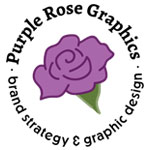I’ve spent close to a decade doing graphic design in Orange County, California and I’ve seen a lot of designs that have these same unfortunate choices in them. It makes them stick out as something created by a newer designer or non-designer and can change the potential client’s perception and expectation of the business who created the post. I do not exempt myself from any of this. I made my fair share of faulty design choices when I was new too. Once I started studying what made a design great, I was able to start creating better designs. Check out your last 10 designs and see if you’ve made any of these unfortunate choices!
• Too Many Elements
Every inch of your design doesn’t need to be filled to the brim with text or images. It creates an overwhelm that makes it hard for your customers to understand what you are telling them. Instead, think about what message you want to get across in 10 seconds or less and prioritize that. Use short amounts of text and simpler images. Don’t worry about any blank space in the design because it gives the eye a place to rest.
• All Text is in Large Bold Letters or Crowded Together
Using large bold letters for every single line of text, especially if it is in all caps, is pretty much screaming at your audience, but in writing. Instead, use bold letters sparingly for whatever part of the text you want to catch attention the most.
When I explain to a client about crowding the text, I tell them that crowding all the text together is kind of like walking into a room where the radio is playing, while the tv is running and someone is practicing the piano all at full volume at the same time. If you walked into that noisy room, you might struggle to understand what should be listened to first. The same goes for crowded text. It’s hard to understand what to read first and sometimes the text is just simply, hard to read. Instead, keep the text in one area, but give the lines of text a little bit of space to help them be understood better.
• Random Placement of Elements
Randomly placing text, logos, and artwork all over the space of the design doesn’t make the design artsy, it makes it confusing and hard to read. There’s no natural flow to the information and it causes the viewer’s mind to struggle to understand what they are looking at and what they should do next. More often than not, if a potential client looks at something that seems confusing, they will just pass it up. Instead, keep things simple and create a flow for the information. This allows the reader to know where to look first and how to follow the information.
• Poor Use of Contrast
Contrast is the use of opposites in a design. It makes things interesting to look at, but it also makes it readable – think of a light-colored background with dark-colored text. What a lot of non-designers do is use elements that are too similar in shade or weight or height. This makes the design less interesting to look at and lack that “pop” or “wow factor” that catches attention. Instead, use different weights of the same font like bold and regular for example. You can also pick a thick heavyweight font and mix it with a thinner lighter font. Choose colors that are opposite ends of the value scale, for example, a dark red with a light almost white shade of red. You can also choose colors that are opposite sides of the color wheel like orange and blue. This will make the design interesting enough to catch the attention of your potential client and give you a better chance of having them read your message.
Lack of Consistency
A business is talking to the same people about the same subject, but each design that gets shared looks totally different from the ones before it. Each design uses different colors, totally different font choices and don’t look at all related to each other or the company they represent. This lack of consistency causes a disjointed feel and makes it look like the company is confused with who they are and what they stand for, which can erode a potential customer’s trust in the company. Instead, keep all designs in the same color family and use fonts that keep with the same vibe or feeling.
This is why a lot of brands, especially brands that have independent reps or franchises have a brand or style guide with pre-chosen colors, page layouts, and fonts that always have to be used in their designs. Creating a level of consistency in design style, fonts, and colors create a unified look that helps the company build trust and be better remembered, which helps draw in leads.
If you’ve made any of these unfortunate choices, that is okay, now you know what to do instead and can start creating something better! However, if you feel you need a little more training check out my class “From Bland to Grand: DIY design basics that take your graphics to the next level” and if you have any questions at all you can email me!
